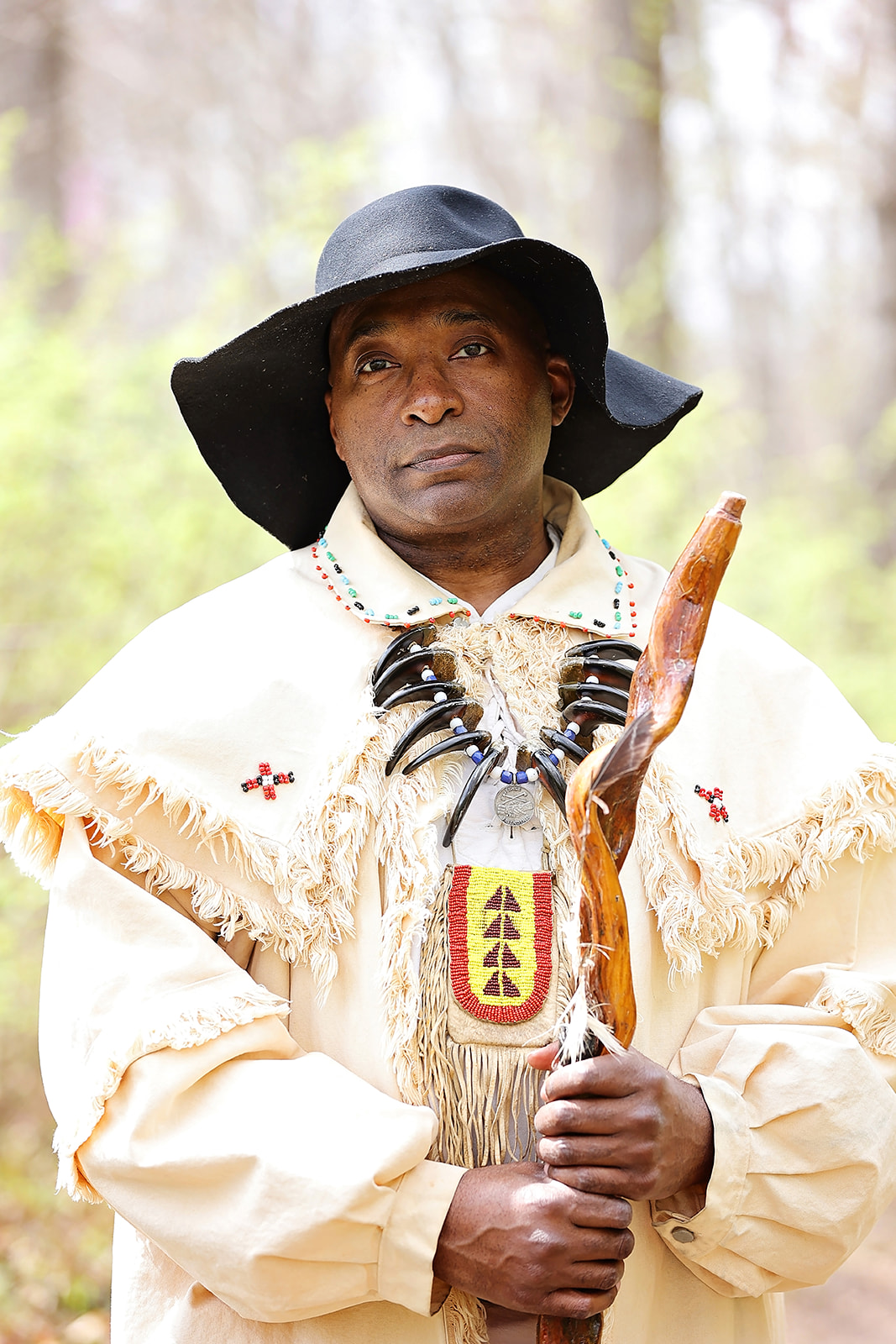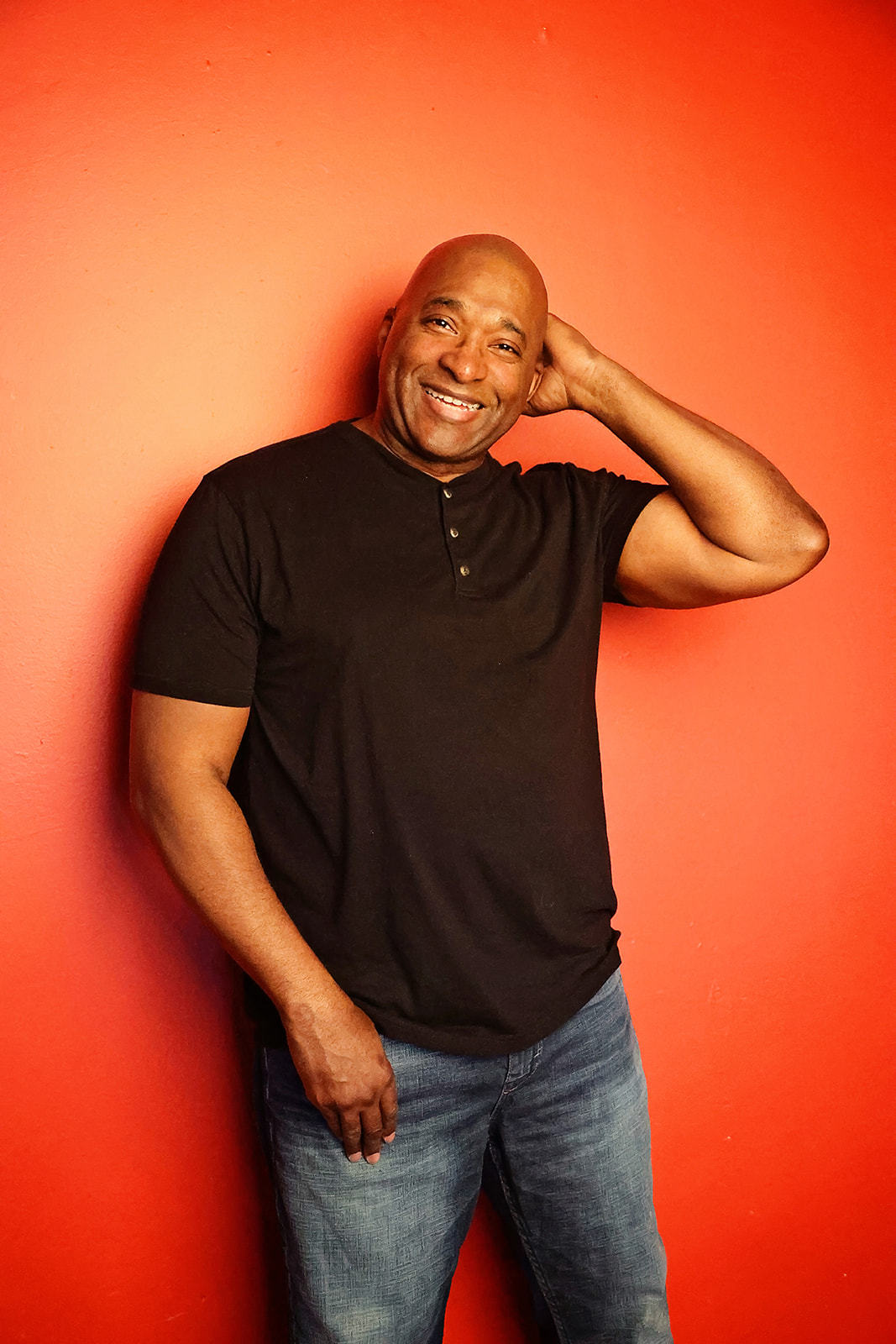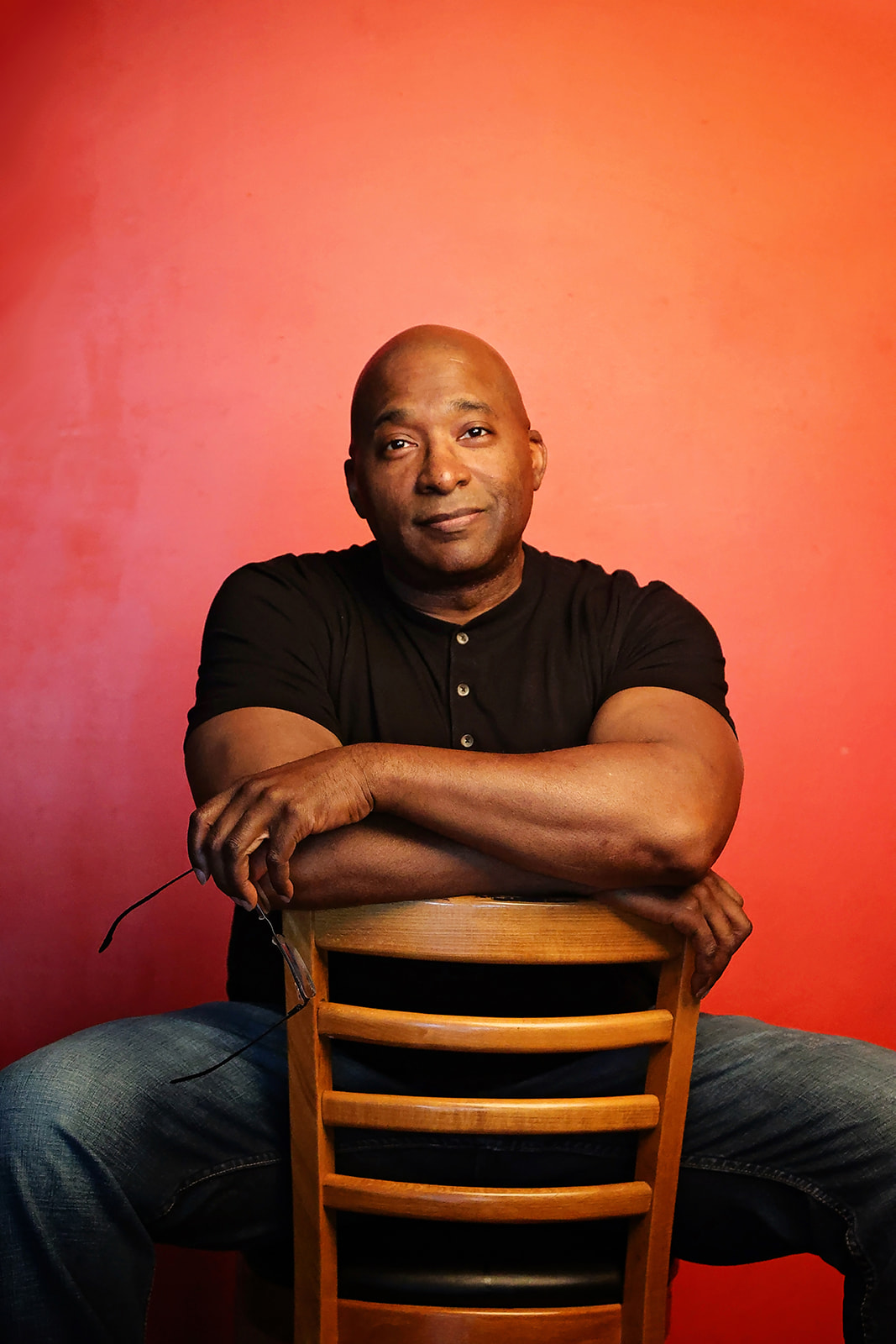We caught up with the brilliant and insightful Hasan Davis a few weeks ago and have shared our conversation below.
Hasan, thanks for taking the time to share your stories with us today Can you talk to us about a project that’s meant a lot to you?
As a living history interpreter, I have breathed life into the stories of Civil War Soldier: Angus Augustus Burleigh an Boxing Legend: Joe Louis. But the most meaningful project of my career so far, has been the journey of bringing the story of York—the only Black team member of the famed Lewis and Clark Expedition—to life. This work has spanned almost three decades and taken many forms: a one-man theatrical performance (researched, written, and performed by me), a published children’s book, and most recently, the ongoing Big Medicine: York Outdoors Project with the National Park Services, including the recently released documentary *Big Medicine: York Outdoors*, a film that invites communities across the nation to reckon with whose story gets remembered, who’s presence gets honored, and why.
Growing up, I never saw myself in the pages of history books. I vividly recall the day I received my first social studies textbook at Ashland Elementary in St. Louis, Missouri. With eager hands, I flipped through each chapter looking for a glimpse of someone who looked like me—someone who might show me that I, too, belonged in the American story. I found only one image: a photograph of an enslaved man, his back marked by brutal scars. The caption read, “The American Negro, Slave.” That image, and its message, burned itself into my young mind: you are not the explorer, the hero, or the architect of this nation. You are the footnote—if mentioned at all.
But at home, my parents—Alice Lovelace and Charles “Jikki” Riley—refused that narrative. They raised me on oral traditions rich with stories of African kings, Black trailblazers, and Black resilience. It was through them that I came to understand the power of story, not just to inform, but to transform. And as I became a man—through law school, through my time as Kentucky’s Commissioner of Juvenile Justice, and as an artist—I made a commitment to use my life and my work to tell the stories too often left untold.
York’s story found me at the intersection of historical erasure and cultural recovery. Here was a man who endured the yoke of slavery, was essential to one of the greatest expeditions in U.S. history, earned the respect of Indigenous communities along the trail, and yet was denied his freedom upon return. His contributions were monumental, and still, his name barely survives the footnotes of textbooks.
I created a one-man show to embody York’s story, not only as an act of remembrance, but as an offering. I wanted young Black boys—especially those who, like me, never saw themselves reflected in American triumphs—to witness York’s courage, curiosity, and contributions. I wanted them to see that we have always been a part of the journey, even when history books refuse to make space for us.
This project has been deeply healing for me, and transformative for audiences. I’ve performed in schools, museums, correctional facilities, and national conferences. I’ve heard young men say, “If I had known this story earlier, I might have made different choices.” That is the power of storytelling. That is why this work matters.
And it doesn’t stop here. With the *Big Medicine* documentary and the continued search for York’s descendants and resting place, I’m committed to ensuring York doesn’t just live in the shadows of history—but in the hearts and minds of a new generation who deserve to see themselves as co-authors of this nation’s story. So, as we approach the Semi-quencentinniel of the United States, I will be launching the next phase of this work. America 250: Hope Rising, centering the York Legacy to Explore History, Healing, and Hope for Another 250 Years.

Hasan, before we move on to more of these sorts of questions, can you take some time to bring our readers up to speed on you and what you do?
The story of York—and the journey to bring him into the light—says a lot about who I am and why I do this work.
For over 30 years, I’ve dedicated my life to helping young people and the adults who serve them discover the power of story, identity, and hope. My name is Hasan Davis, and I’m a Hope Dealer.
I came to this work honestly. I was a kid who struggled—labeled early, suspended often, pre-teen arrest, seven years of supervised probation, then expelled from alternative school. But I was also blessed. Along my path, there were individuals who didn’t give up on me. They offered support, accountability, and something even more powerful: belief. They were my Hope Dealers. And because of them, I made it—through college, through law school, through service as Kentucky’s Commissioner of Juvenile Justice. And because of them, I made a commitment to be that kind of presence for others.
Through my company, Hasan Davis Solutions, I partner with schools, community organizations, human service agencies, and youth-serving systems across the country. My work weaves together history, lived experience, performance, and personal development. I offer keynote speeches, workshops, leadership coaching, historical performances, and community residencies that help organizations inspire courage, build connection, and deepen their impact.
What sets me apart? I don’t just talk about hope—I practice it. Every engagement I lead, whether it’s a training for juvenile justice workers or a theatrical performance in a school gym, is designed to awaken something real. I use history—especially the stories that have been left out—to remind us that we come from strength. I use my own story to show that transformation is possible. And I invite every person I meet to see themselves not as a bystander to change, but as a Hope Dealer in their own community.
The people I serve are often the people who show up every day in hard places—teachers, counselors, caseworkers, parents, advocates. They don’t need a savior. They need reminders that their work matters. They need tools to sustain themselves and each other. They need fuel. That’s what I bring.
I’m most proud of the spaces I’ve helped build—spaces where people feel seen, challenged, inspired. Where youth who’ve been counted out see themselves in the story of York or Burleigh or Joe Louis and think, “If he did that, maybe I can too.” And where adults feel reconnected to their purpose and power.
Hope is not a wish—it’s a practice. And whether I’m performing for a thousand students or sitting in circle with five returning citizens, my mission is the same: to spark a fire that keeps burning long after I’ve left the room.
At Hasan Davis Solutions, we believe every person has a story that can change the world—and we help people remember how to tell it, live it, and pass it on.

We often hear about learning lessons – but just as important is unlearning lessons. Have you ever had to unlearn a lesson?
One of the biggest lessons I had to unlearn was the idea that “the job” and “what you love” have to live in separate lanes.
I trained as a lawyer. I served as Kentucky’s Commissioner of Juvenile Justice. I’ve held titles, sat at tables of power, and worn the suits to match. And for a long time, I believed that my creative work—my storytelling, my performances, my writing—was something I had to squeeze in around the edges. I thought the art was what I did after the workday ended. What I had to learn—what I’m still learning—is that the art is the work.
It wasn’t easy. There’s a deep, sometimes unspoken pressure—especially for those of us who navigated from the edge, from those communities where economic security is a hard-won prize—we are encouraged to choose the path that seems most “legit.” Being a lawyer, a commissioner, even a speaker—those were roles people understood. But telling people that you’re going to make a living sharing forgotten histories, dressing up as York, or helping systems rediscover their humanity through story? That took some re-framing—both for me, and for the folks around me.
I had to learn how to treat my craft as both sacred and sustainable. That meant setting real rates, building out Hasan Davis Solutions as a business, and being unapologetic about the value of what I bring into a room. It meant educating clients—schools, human service agencies, youth programs—that art is not an “extra.” That hope is not fluff. That courageous storytelling is a strategy for impact.
I had to believe that my ancestors didn’t pass these stories down just so I could starve quietly in the name of purpose. They passed them down so I could carry them forward—with power, with intention, and yes, with a plan.
So today, I wake up every day and do the work I was made for. I show up as a Hope Dealer. I honor the art, and I build the business around it. And I keep unlearning the lie that purpose and prosperity can’t walk side by side.
That’s the lesson: your calling is not a side hustle. It’s the assignment. And it’s worth the investment—from you, and from those who benefit from it.

For you, what’s the most rewarding aspect of being a creative?
For me, the most rewarding part of being an artist and a creative is the chance to show up as a powerful presence that helps others remember their own power and presence.
Whether I’m on a stage, facilitating a story circle, or standing in front of a group of young people behind prison walls, I see my role as sacred: to create spaces where people feel seen, known, and reminded of their worth. That’s the real art. The performance is just the invitation.
There’s one moment I come back to often. I was speaking at a correctional facility, sharing the story of York, this unsung Black hero who traveled the full length of the Lewis and Clark Expedition and was critical to its success. Afterward, a young man stood up—eyes locked, jaw tight—and said, “If only I had known these stories when I was young, maybe I’d have made different choices.”
That moment wasn’t about regret—it was about revelation. And it broke something open in me. Because I knew exactly what he meant. When you grow up never seeing yourself as the heroes, the builders, the dreamers of history, it gets harder to imagine yourself in the future.
That’s why I do this work. To make sure young people—especially young Black men—know that their legacy didn’t start with pain, and it doesn’t have to end in punishment. To share the stories of Burleigh, York, Joe Louis—not as victims, but as visionaries, warriors, scholars, and change-makers.
Being an artist means I get to plant seeds of hope, courage, and identity in places that have been overlooked and underestimated. And when someone walks away from a performance or a conversation not just entertained, but empowered—that’s the reward that keeps me going.
Because in the end, the most powerful art isn’t what you create for people—it’s what you awaken in them.
Contact Info:
- Website: https://www.hasandavis.com
- Instagram: https://www.instagram.com/hasandavis/
- Facebook: https://www.facebook.com/hdsolutions/
- Linkedin: https://www.linkedin.com/in/hasandavis/
- Twitter: https://x.com/HasanDavis
- Other: https://www.youtube.com/watch?v=FUxVu5sqfKQ&t=1401s&pp=ygULaGFzYW4gZGF2aXPSBwkJwwkBhyohjO8%3D
https://www.youtube.com/watch?v=0kjbCY43cWA&t=10s&pp=ygUXaGFzYW4gZGF2aXMgZmFtaWx5IHRpZXM%3D


Image Credits
Photos by Erica Chambers
https://www.ericachambers.com


